The notion that one had to be an elite golfer to be an elite architect was successfully disproved in the 1920s by Alister MacKenzie and by many others since. However, in some cases, the greatest golfers—those who had captured at least one major championship—also displayed superior skill as designers.
Ten different major-winning architects earn design or co-design credit among the courses ranked in The LINKS 100, the 100 best courses in the world as voted on by the architects of the ASGCA, EIGCA, and SAGCA.
Here are the top 10 courses in The LINKS 100 designed or co-designed by major championship winners.
*Two other selections earn asterisk status, as the associated architect’s major championship win(s) came in an event that is no longer considered one of the four men’s professional majors.
Royal County Down (Newcastle, Northern Ireland)—LINKS 100 Ranking: 3
Architect: Old Tom Morris; Open Championship (1861, 1862, 1864, 1867)
Other LINKS 100 designs or co-designs: No. 10 Royal Dornoch (Championship); No. 20 Muirfield; No. 23 Lahinch (Old); No. 43 Carnoustie; No. 64 Machrihanish; No. 68 Prestwick

Framed by Dundrum Bay and the Mountains of Mourne, this 1889 Old Tom Morris creation is also defined by golf’s most fearsome looking bunkers—deep, with the fear factor amplified by the densely whiskered edges. Towering sandhills cloaked in prickly gorse, tangled heather, and no fewer than six blind shots burnish County Down’s credentials as golf’s supreme beautiful brute.
Sand Hills (Mullen, Neb.)—LINKS 100 Ranking: 7
Architect: Ben Crenshaw (with Bill Coore); Masters (1984, 1995)
Other LINKS 100 designs or co-designs: No. 29 Cabot Cliffs; No. 35 Friar’s Head; No. 97 Bandon Trails

This private, 1995 Coore & Crenshaw design in remote western Nebraska ranks as the best course built in the past 70 years. Hewn from wind-blasted, sandhill-laced, rippled prairie land and blanketed with tall, golden grasses, it’s sufficiently testing at 7,089 yards, especially with its exquisitely crafted, Dornoch-style greens that are propped up just enough to demand superior approach shots and chipping.
Augusta National (Augusta, Ga.)—LINKS 100 Ranking: 12
Architect: Bobby Jones (with Alister MacKenzie); U.S. Open (1923, 1926, 1929, 1930); Open Championship (1926, 1927, 1930)
Other LINKS 100 designs or co-designs: No. 75 Peachtree

Augusta National is the vision of Bobby Jones and his chosen architect, Alister MacKenzie. Both intended for the course to reflect the spirit and strategic options of the Old Course at St. Andrews, the course that they admired most. They succeeded brilliantly. Nearly every hole at St. Andrews and Augusta National provides a safe route to the green and a riskier one. Combine staggering beauty and Masters tradition and it’s easy to see why Augusta National is so revered.
Trump Turnberry, Ailsa (Turnberry, Scotland)—LINKS 100 Ranking: 25
Architect: Willie Fernie; Open Championship (1883)
Other LINKS 100 designs or co-designs: No. 49 Royal Troon (Old)

Fernie’s original layout dates to 1902. Under the Trump aegis since 2014, Turnberry provides unforgettable images, from Tom Watson’s heroic and tragic performances to remarkable seaside holes that feature churning surf, a lighthouse, and vistas of the football-shaped monolith called Ailsa Craig jutting out of the sea. Rebuilt by P. Mackenzie Ross following its use for RAF airfields in World War II, the “Duel in the Sun” 1977 Open Championship venue has recently undergone acclaimed upgrades from Martin Ebert that have enhanced many of its most celebrated holes.
Sunningdale, Old (Sunningdale, England)—LINKS 100 Ranking: 40
Architect: Willie Park Jr.; Open Championship (1887, 1889)
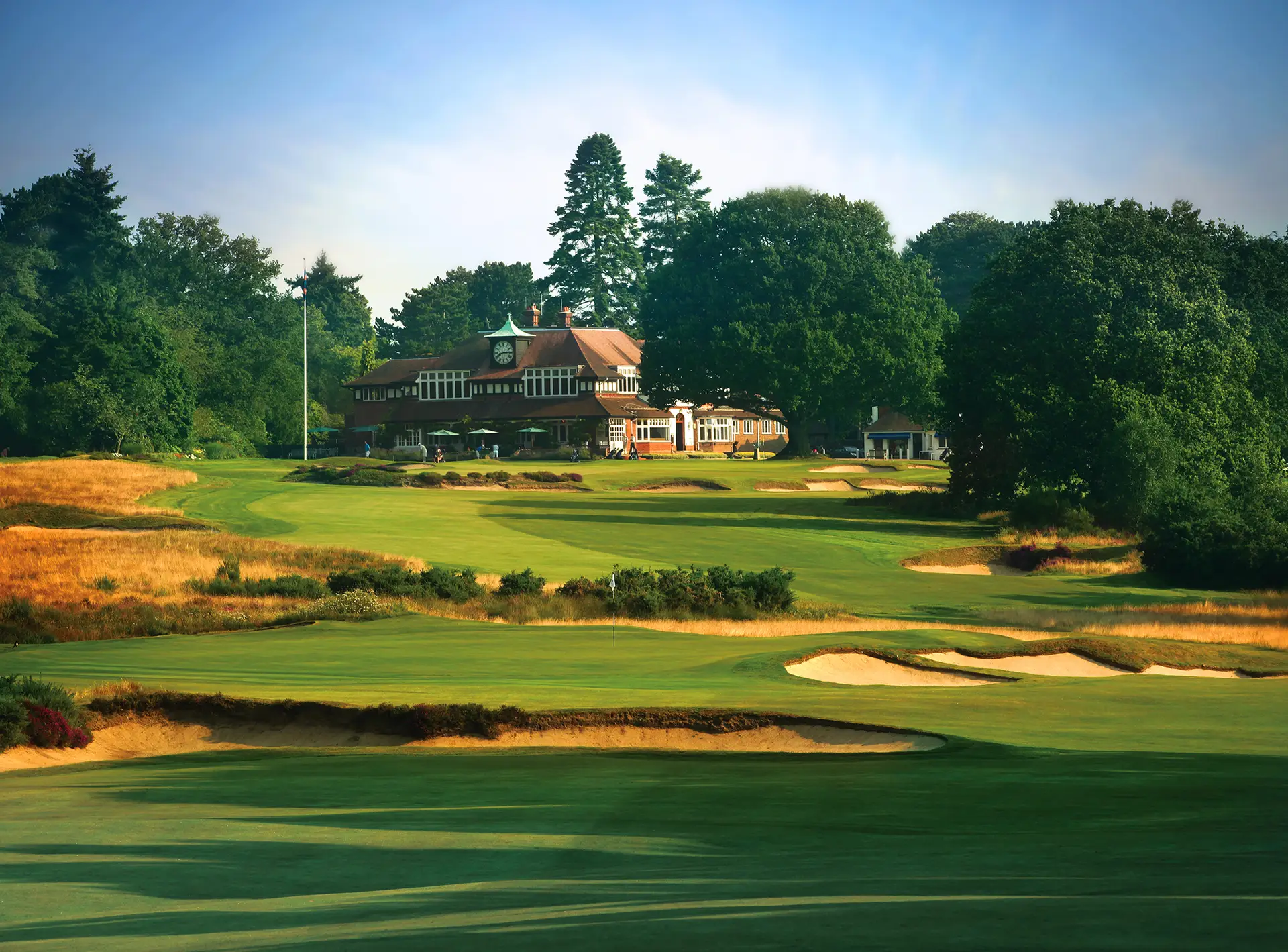
Perhaps the noblest of the London-area heathland courses, this charming, tree-lined track is dotted with heather patches and ingeniously placed bunkers. Willie Park Jr. was the first designer of inland courses that looked natural and embraced strategic design, as best illustrated by Sunningdale, circa 1901, where he installed the first manmade water hazard in golf history, a pond on the par-four 5th. Renowned for his putting prowess, Park became one of the finest early practitioners of imaginative, sophisticated green contouring.
Carnoustie (Carnoustie, Scotland)—LINKS 100 Ranking: 43
Architect: James Braid (revising earlier work by Allan Robertson and Old Tom Morris); Open Championship (1901, 1905, 1906, 1908, 1910)
Other LINKS 100 designs or co-designs: No. 78 Royal Cinque Ports

Dubbed “Car-Nasty” for its head-scratchingly hard setup for the 1999 British Open, this ancient links dates to 1842 and has hosted eight Open Championships. Heather, gorse, jungle-like fescue rough, steep-faced revetted bunkers, and the sinuous Barry Burn create havoc in the wind. The toughest of the Open rota courses has witnessed winners such as Ben Hogan, Gary Player, and Tom Watson. Braid was responsible for modernizing the layout in 1926, with new bunkering schemes and green complexes that remain in place today.
Muirfield Village (Dublin, Ohio)—LINKS 100 Ranking: 71
Architect: Jack Nicklaus (with Desmond Muirhead); Masters (1963, 1965, 1966, 1972, 1975, 1986); U.S. Open (1962, 1967, 1972, 1980); Open Championship (1966, 1970, 1978); PGA Championship (1963, 1971, 1973, 1975, 1980)
Other LINKS 100 designs or co-designs: No. 70 Harbour Town (though ranked one slot higher than Muirfield Village, Nicklaus’s design involvement has had him listed as either consultant or co-designer)

Co-designed with Desmond Muirhead, Jack Nicklaus’s 1974 homage to Augusta National ranks 71st in the world on The LINKS 100 list and has been a favorite of PGA Tour players since the Memorial Tournament started in 1976. Beautiful, fair, and balanced, if devoid of any quirk, Muirfield Village presents compelling stroke- and match-play drama via risk/reward par fives and a terrific short par four at the 14th, while also being a strong, superbly conditioned test from start to finish.
Woodhall Spa, Hotchkin (Woodhall Spa, England)—LINKS 100 Ranking: 90
Architect: Harry Vardon; Open Championship (1896, 1898, 1899, 1903, 1911, 1914)
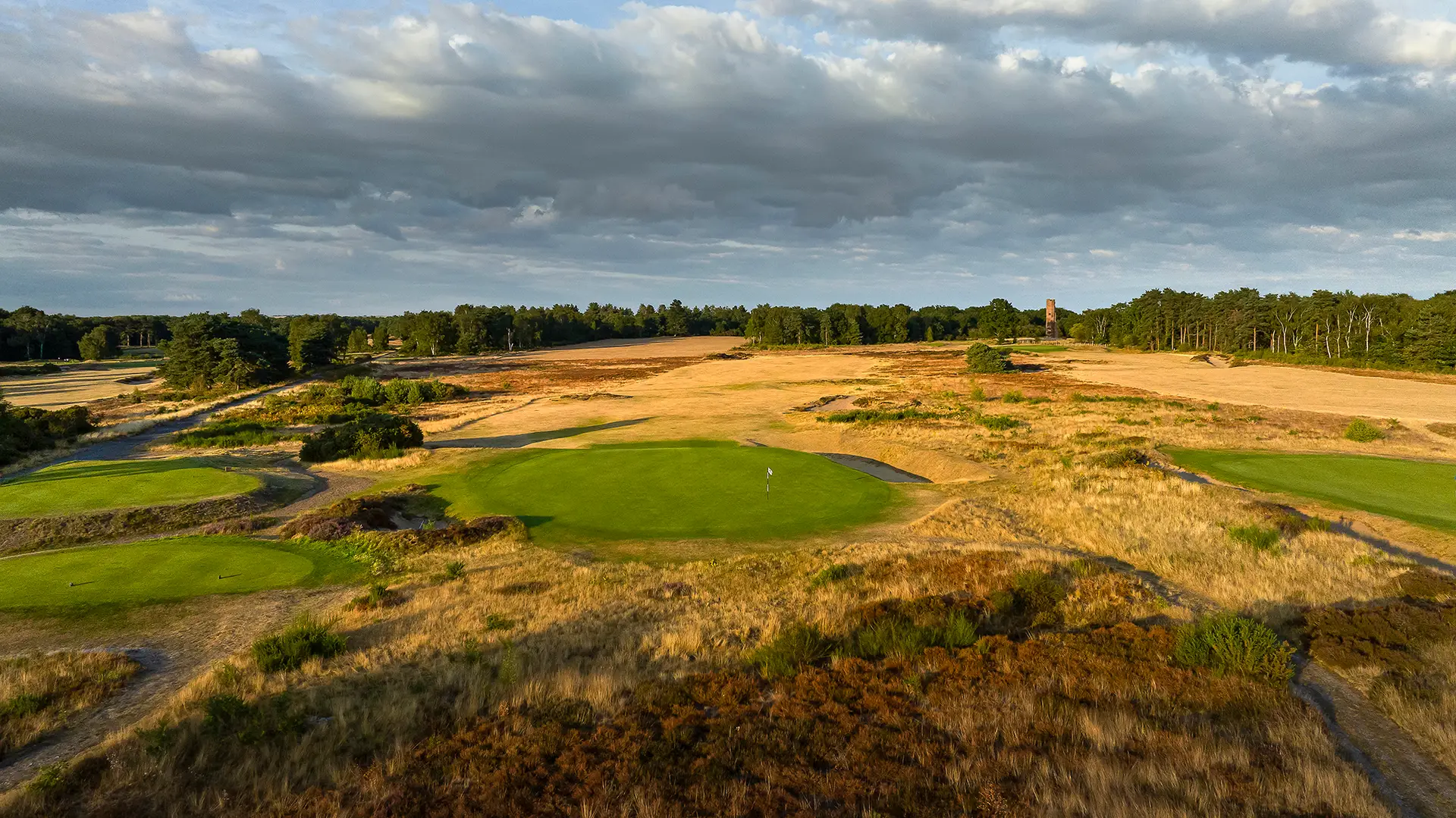
Harry Vardon left us much more than six Open Championship wins and a grip. Woodhall Spa is Vardon’s design legacy, an intriguing heathland/“inland links” blend, an oasis of tumbling terrain amid the surrounding flat fenland of Lincolnshire in England. Formidably deep bunkers are Woodhall Spa’s defining trait, along with plentiful gorse and a stellar set of par threes. Credit architects H.S. Colt and S.V. Hotchkin for enhancing Vardon’s work and turning the course into one of golf’s supreme shotmaking tests.
Peninsula Kingswood, North (Frankston, Australia)—LINKS 100 Ranking: 91
Architect: Geoff Ogilvy (with OCCM colleague Mike Cocking); U.S. Open (2006)
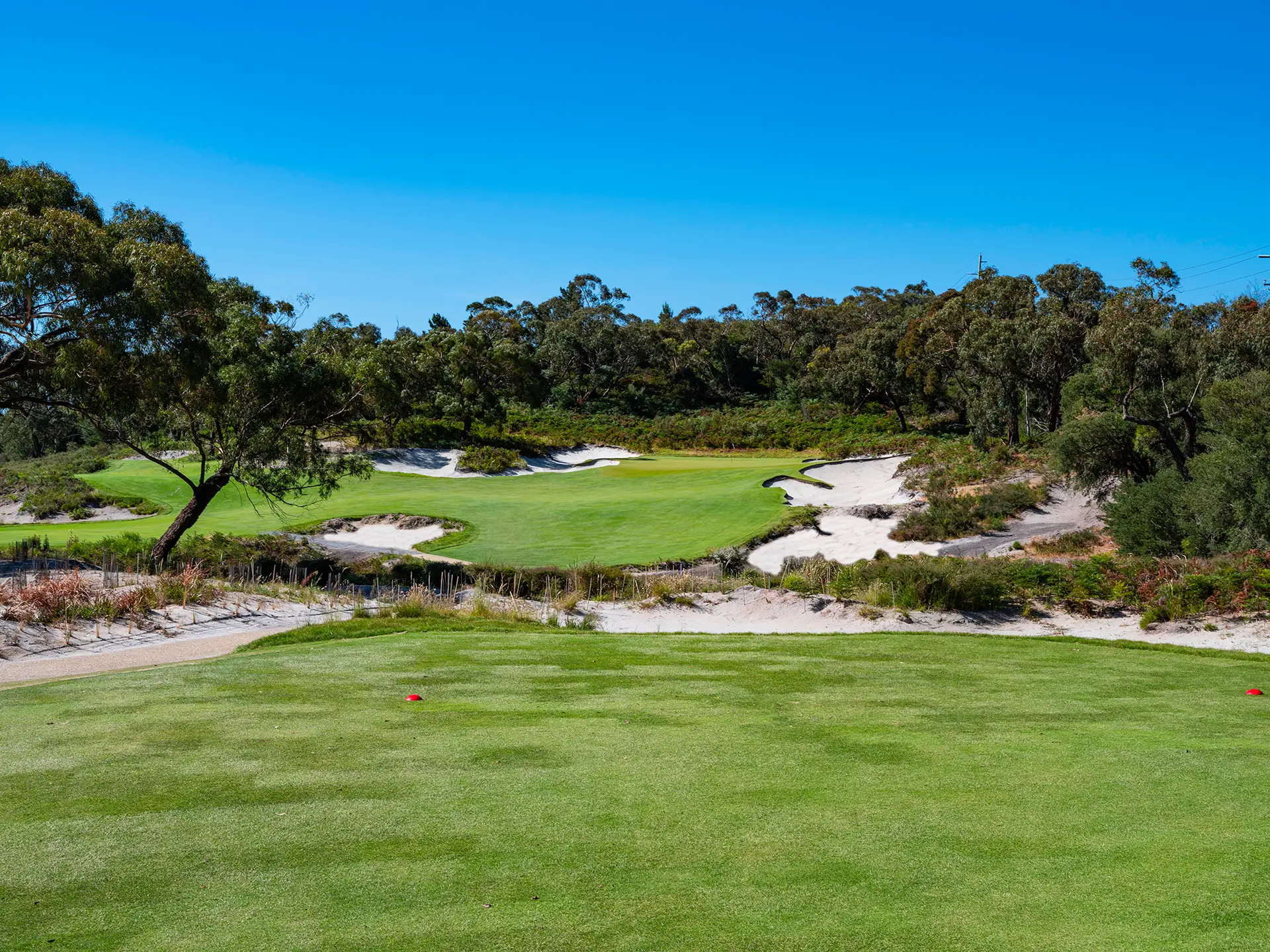
Peninsula Kingswood was formed in 2013 after the merger of two coastal clubs in Victoria, 15 miles south of Royal Melbourne. With the cash from Kingswood’s golf course sale to a real estate developer, the new club, known by the locals as “PK,” benefitted from an Ogilvy, Clayton, Cocking and Mead (OCCM) makeover and opened its North and South courses in 2019—spearheaded by former PK member Mike Cocking. (Mike Clayton departed the firm in 2019.) While Cocking did much of the heavy lifting, firm member Ogilvy’s contributions helped mold the final product—perhaps no surprise, as Ogilvy was long considered one of professional golf’s most insightful thinkers about architecture before he formally entered the business. With bunkering, scale, green complexes, and strategies resembling a modern-day Royal Melbourne, Peninsula Kingswood has captivated all who have encountered it.
Portmarnock, Red/Blue (Portmarnock, Ireland)—LINKS 100 Ranking: 100
Architect: Mungo Park (with W.C. Pickeman, George Ross, and George Coburn); Open Championship (1874)

This low-profile but character-filled Dublin-area links played host to the 1991 Walker Cup, where Phil Mickelson and the Yanks prevailed, despite strong efforts from Padraig Harrington and Paul McGinley. Seve Ballesteros, Bernhard Langer, and Ian Woosnam are among those who captured Irish Opens here. Arnold Palmer once tabbed the 15th as one of golf’s best par threes. Deep pot bunkers and low dunes that offer little protection from the wind make Portmarnock Ireland’s sternest, yet fairest championship test. The Red and Blue are the club’s original nines. Fred Hawtree created the Yellow nine in 1971. Mungo Park was a member of one of 19th century Scotland’s most famous golf families. His brother, Willie, and his nephew, Willie Park Jr., were also Open Championship winners. Mungo Park supervised the design of Portmarnock in 1894 and stayed on as the club’s first professional for one year.
National Golf Links of America (Southampton, N.Y.)—LINKS 100 Ranking: 4
Architect: Charles Blair Macdonald; U.S. Amateur (1895)
Other LINKS 100 designs or co-designs: No. 11 Chicago Golf Club (with Seth Raynor)
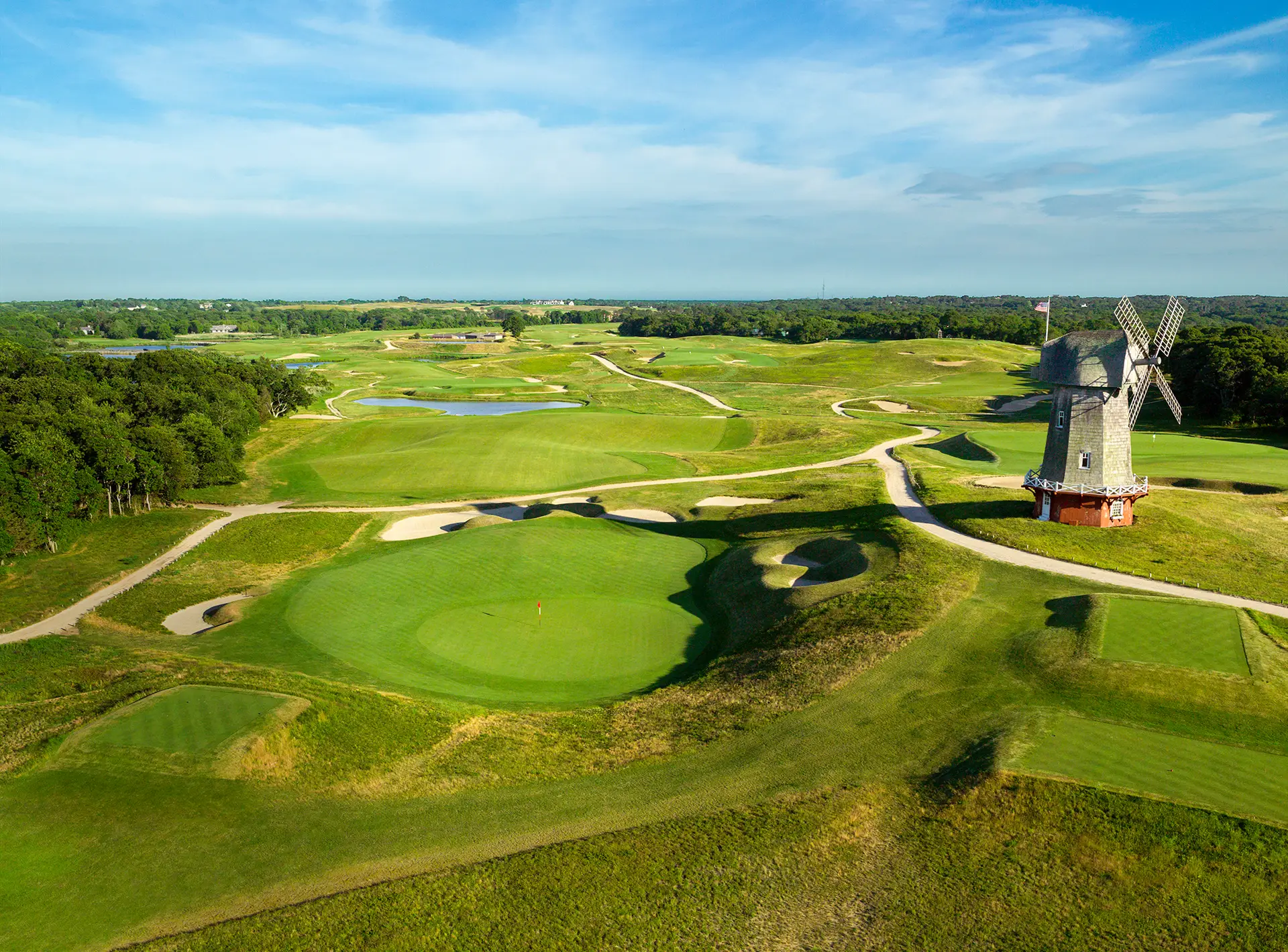
In 1911, pioneer American architect C.B. Macdonald crafted a collection of “all-star” holes alongside Peconic Bay on Long Island, almost all of them modeled after the best holes he had seen in the British Isles. Years before, at age 16, Macdonald ventured to Scotland to study at the University of St. Andrews. He played the Old Course regularly with legendary professional and course designer Old Tom Morris. It’s no surprise that the lessons he learned about St. Andrews transferred seamlessly to the National, especially regarding strategy, variety, and green design. Macdonald captured the inaugural U.S. Amateur in 1895 at Rhode Island’s Newport Country Club. For the next five or so decades, the U.S. Amateur was considered a major championship.
Garden City Golf Club (Garden City, N.Y.)*—LINKS 100 Ranking: 74
Architect: Walter Travis (with Devereux Emmet); U.S. Amateur (1900, 1901, 1903); British Amateur (1904)
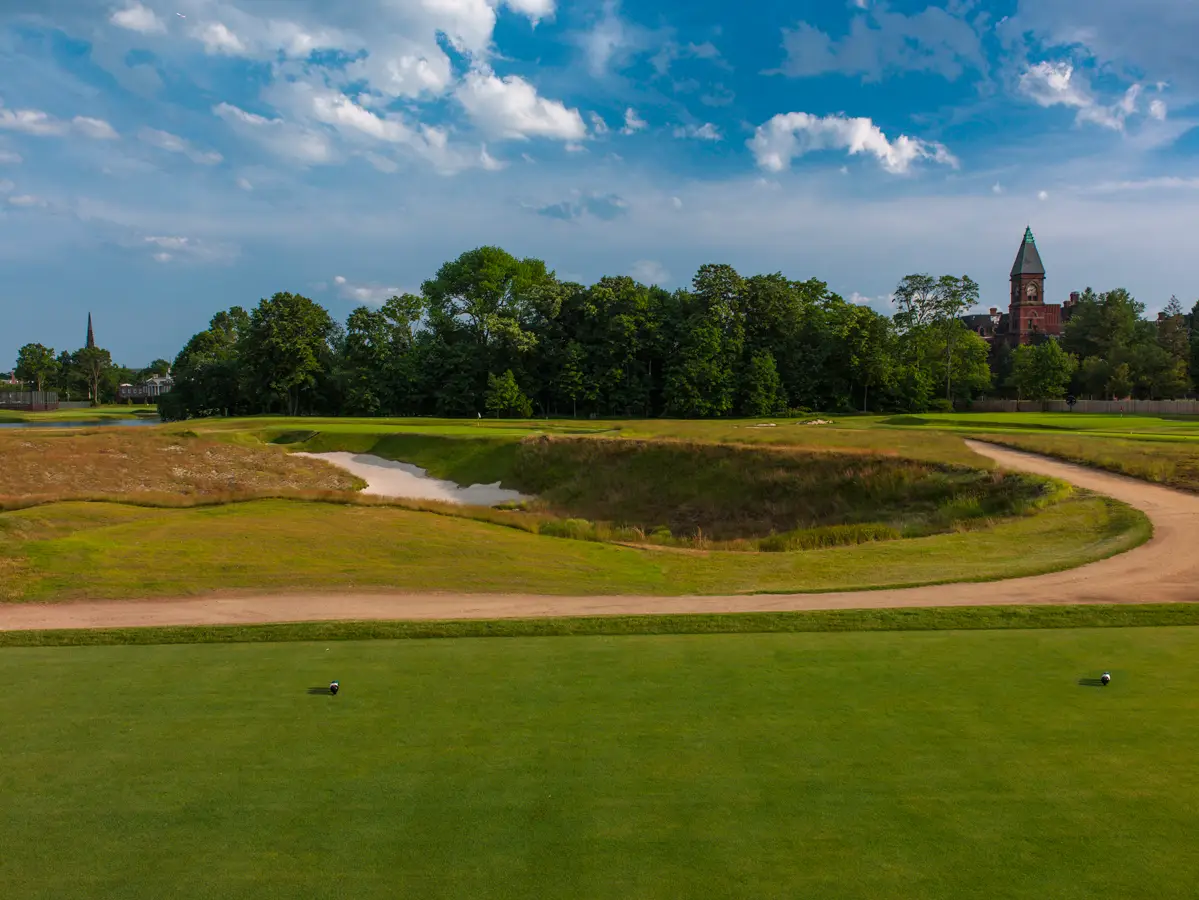
This ancient, men-only Long Island layout dates to 1899. Today it plays as firm and as fast as any British links, much as it did in the old days, with tall fescue and sea breezes constant companions. Laurie Auchterlonie captured the 1902 U.S. Open here with record scores, owing to the debut of the longer, more durable Haskell ball. Walter J. Travis captured three U.S. Amateur titles and one British Amateur crown in the days when both tournaments were considered major championships. He was a prolific designer, with original courses such as New York’s Westchester Country Club, Pennsylvania’s Country Club of Scranton, and Maine’s Cape Arundel Golf Club. His extensive 1906 remodeling of Devereux Emmet’s 1899 Garden City Golf Club design established his bona fides as an in-demand architect. Ahead of the 1908 U.S. Amateur at Garden City, Travis lengthened the layout, crafted new bunkers and green complexes, and eliminated cross-bunkers.


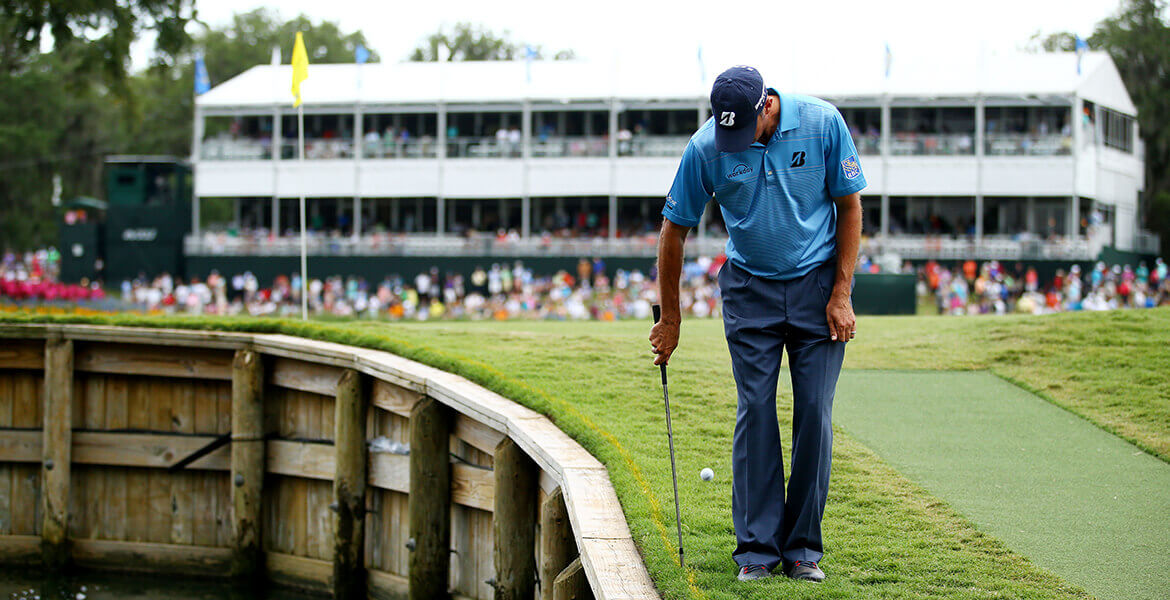


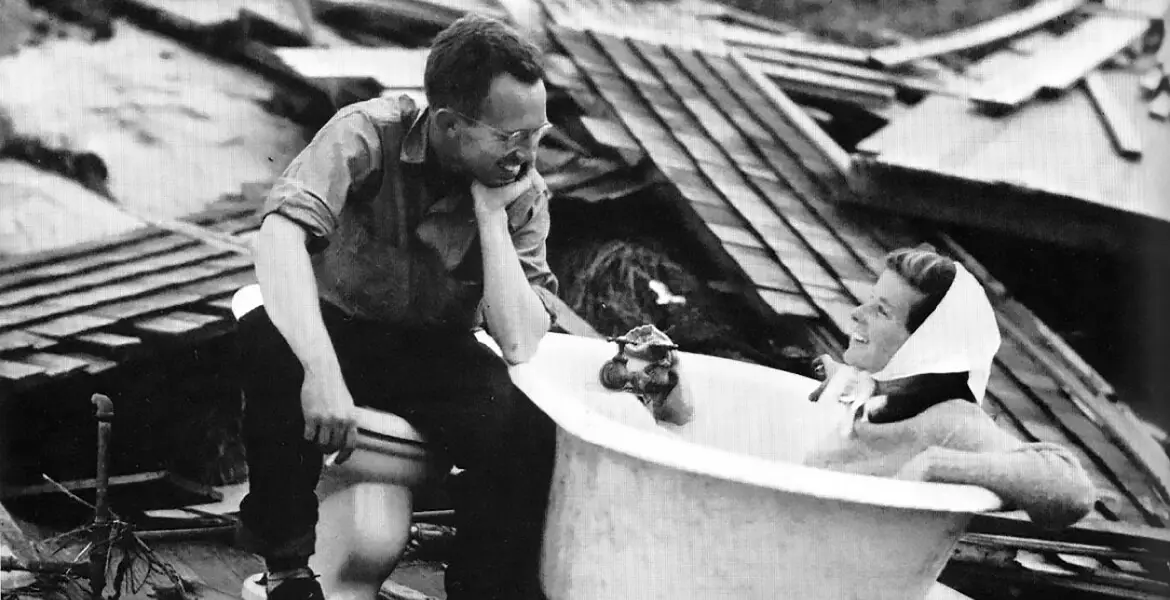
Bobby Jones, Peachtree Golf Club
No mention of Palmer’s Tralee or Norman’s Doonbeg?
The US Am is NOT a major
It certainly was back then. Bobby Jones’ Grand Slam consisted of British Open, U.S.Open, U.S.Amateur and British Amateur. Around the turn of the century, amateur golfers were held in higher esteem than the pros.
Tom Lehman-The Prairie Club Dunes Course…